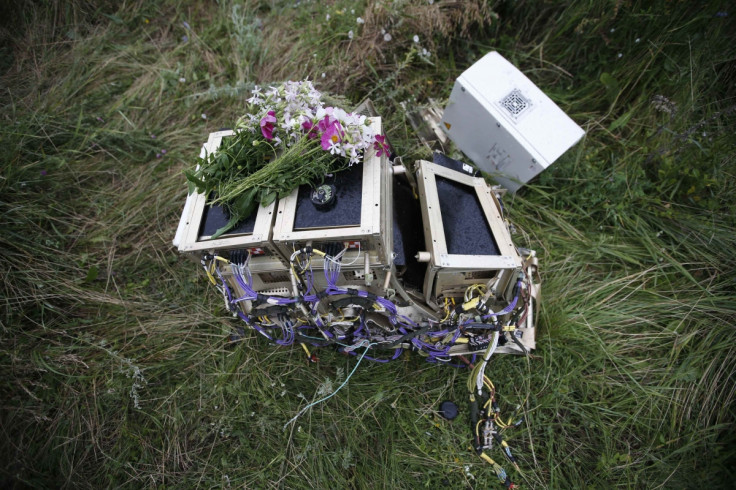Malaysia Airlines MH17: UK Analyst's Pictures and Video Reveal 'Early Clues' to Missile Explosion

An analyst at the Royal United Services Institute in the UK has tweeted what he claims is photographic evidence that Malaysia Airlines MH17 was brought down by a missile strike.
Speaking to the Financial Times, Justin Bronk, a research analyst in the Military Sciences programme at RUSI, said the pictures show clear evidence of shrapnel damage.
"The size of the shrapnel holes is consistent with what one might expect to see from an SA-11 hit. However, it is difficult to assess the total blast pattern with such a small fragment of fuselage," he told FT.com.
The pictures Mr Bronk refer to are understood to show sections of the cockpit and left wing.
#MH17 fuselage from port side cockpit section showing heavy shrapnel damage consistent with SA-11 hit, credit @FT pic.twitter.com/F4TWSXWvTZ
— Justin Bronk (@Justin_Br0nk) July 21, 2014"Shrapnel damage suggests SA-11 proximity frag warhead may have exploded slightly below and ahead of #MH17's port wing," Bronk tweeted.
He added that the detonation of the missile ahead of the aircraft is what one would expect from an anti-aircraft weapon: "The last thing a ground-launched missile wants to do is play catch-up with an aircraft, it would look to get ahead of its target."
Shrapnel damage suggests SA-11 proximity frag warhead may have exploded slightly below and ahead of #MH17's port wing pic.twitter.com/27bceCkacD
— Justin Bronk (@Justin_Br0nk) July 21, 2014As the investigation into the crash of the Malaysian airliner continues, analysts have warned that the images alone are not enough to establish the relevant details of the investigation, such as the type of explosives used.
In addition, the fragmented state of the downed airline was not entirely due to the missile impact. Explosive decompression is believed to have torn the aircraft apart as it flew at 33,000ft.
High density shrapnel perforation on an internal structural component from #MH17 here - possibly part of a spar: http://t.co/1LtN8Q3DUe
— Justin Bronk (@Justin_Br0nk) July 21, 2014Flight MH17 crashed in an area held by pro-Russia rebels last Thursday, killing all 298 people on board.
Western nations say there is growing evidence that pro-Russian separatists shot down the plane using a surface-to-air missile supplied by Russia, while Moscow has suggested Ukrainian government forces are to blame for the crash.
Countries directly affected by the disaster, including the Netherlands which lost 193 citizens in the tragedy, have been concerned that the crash site was not properly sealed off and valuable evidence could have gone missing.
Monitors from the Organisation for Security and Co-operation in Europe have been at the accident site, but their access to the wreckage has been curtai;ed by the rebels.
A spokesperson for the OSCE, Michael Bociurkiw, told the BBC that "major pieces of the plane" had been cut into and that large sections now looked different.
Late on Monday, the pro-Russian rebels who had kept hold of the plane's flight recorders handed over the "black box" equipment to Malaysian officials at a ceremony in Donetsk.
Investigators hope that the recorders, which have been described as being in good condition, will provide firm evidence as to what happened to MH17.
On Tuesday, a refrigerated train carrying the bodies of victims of the Malaysian airliner arrived in the city of Kharkov, outside rebel territory.
EU foreign ministers stated in a meeting in Brussels that two aircraft, an Australian C-17 and a Dutch C-130, will transport the bodies and remains of all victims from Kharkov to RNLAF Eindhoven air base in the Netherlands.
© Copyright IBTimes 2025. All rights reserved.




















